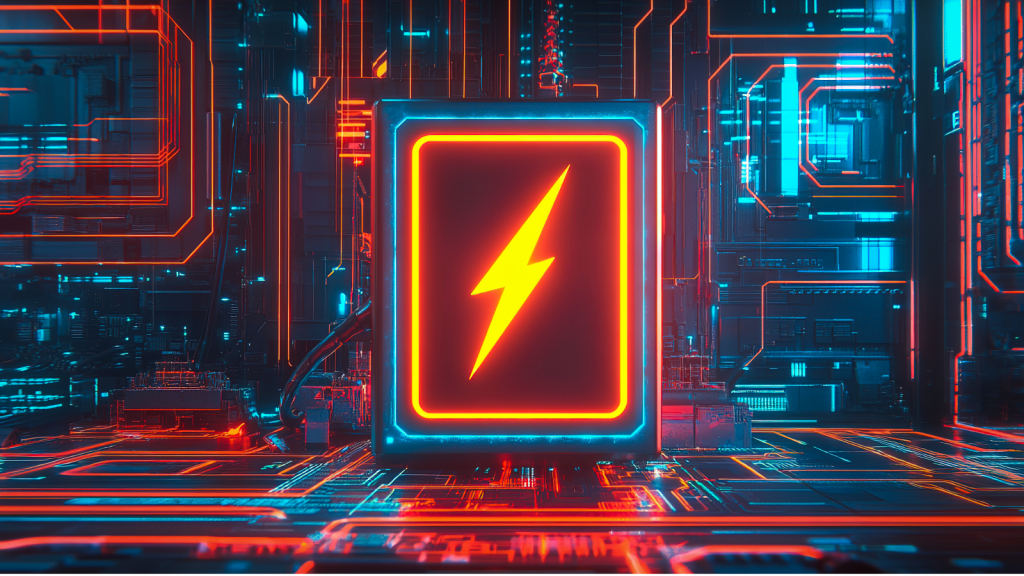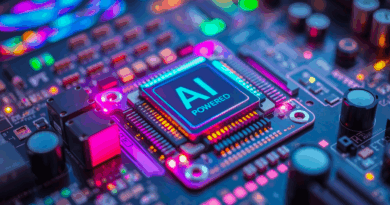A ‘Forgotten Megatrend’ That Could Be Key to the AI Economy
Remember solid–state batteries (SSBs)?
Back in 2020 and ‘21, they were talked about everywhere. They quickly became the centerpiece of the EV hype cycle, touted as the ultimate energy storage solution. If we could make solid-state batteries work, they’d likely be the final puzzle piece that would dethrone Tesla (TSLA) as industry king and launch a wave of next-gen electric vehicles with 500-mile-plus ranges and 15-minute charge times.
The hype sent SPACs like QuantumScape (QS) vertical. Everyone was scrambling to invest.
And then… EV stocks crashed. Enthusiasm cooled. Tesla started talking more about humanoid robots than cars. And solid-state batteries quietly vanished from headlines.
But they never really went away.
Instead, they got better. And now, in 2025, there’s a very real argument to be made that solid-state batteries are about to become more important than ever…
Especially in the context of the unstoppable tech boom that has taken this decade by storm: Artificial Intelligence.
Indeed, solid-state batteries could be a backdoor way to play the AI Revolution. As AI goes increasingly physical – via robots, autonomous vehicles, wearables, and electric aircraft – the need for better batteries is on the verge of insatiable.
And solid-state tech might be the only solution that scales…
Why Solid‑State Batteries Matter Again
What makes SSBs seemingly mission-critical for today’s evolving world?
Well, solid-state batteries use a solid electrolyte instead of the flammable liquid found in traditional lithium-ion cells. This fundamental change enables several major improvements, like:
- Higher energy density – Solid electrolytes allow for the use of high-capacity materials like lithium metal anodes, packing more energy into the same space for longer range or runtime.
- Faster charging – The solid medium can support faster ion transfer with less risk of overheating or damage, dramatically reducing charge times.
- Greater safety – Without flammable liquid, there’s far less risk of fire or thermal runaway, even under stress or damage.
- Longer lifespan – Solid-state designs resist the formation of dendrites (spiky lithium deposits that degrade batteries), which helps preserve performance over many more cycles.
- Smaller, lighter form factors – Higher energy efficiency and safer materials reduce the need for bulky cooling or protective components, shrinking the overall size and weight.
By rethinking the battery’s core architecture, solid-state technology opens the door to safer, faster, and more energy-dense power sources for everything from EVs to smartphones.
So, why did the hype ever die down?
Because reality hit. Making solid-state batteries at scale is hard. Ceramic separators are fragile. Solid electrolytes don’t always interface well. Manufacturing yields were terrible. And EV investors, burned by delays, moved on.
But thanks to recent ground-breaking developments, now is the moment to start paying attention again…
Solid‑State Batteries & the Latest Technical Breakthroughs
QuantumScape, one of the SSB industry’s early high-flyers, just announced a huge breakthrough: the “Cobra” process. It’s a new manufacturing method that’s ~25-times faster than its predecessor and small enough to support scalable gigafactory-style deployment.
And it’s not the only one hitting key milestones right now. Toyota (TM) is planning to launch solid-state EVs by 2027. BMW is testing solid-state tech through its partnership with Solid Power (SLDP).
And Chinese giants like BYD and CATL are pouring billions into next-gen battery designs. In fact, new reporting from Electrek states that “Chinese tech giant Huawei filed for a sulfide-based all-solid-state battery. The new battery reportedly unlocks a driving range of…over 1,800 miles, and supports ultra-fast charging in just five minutes.”
In other words, it seems this tech is maturing rapidly. And just as investors have stopped watching… the race is heating back up.
How Physical AI Drives SSB Demand in Robotics & Autonomous Tech
Now, let’s connect the dots: What does any of this have to do with AI?
From our perspective, everything – because AI is no longer just a software game.
We are entering the era of physical AI, with humanoid robots, autonomous vehicles, smart drones, embodied assistants, and ambient computing.
These are machines that don’t just process data but move through space. Therefore, they need power – and lots of it – in a form that doesn’t undermine their performance or mobility.
Today’s lithium-ion batteries are heavy and bulky, prone to overheating, have limited energy density per volume, and are susceptible to degradation via charging.
That’s a problem for robots, especially those meant to operate untethered, continuously, in the real world.
Solid-state batteries solve almost all of these obstacles, offering higher energy density (so robots can work longer), better thermal stability (so they don’t fry), and a smaller size (so they’re more nimble and efficient).
Suddenly, this has become more than just an EV story…
Batteries are the hidden bottleneck to mass-scale robot deployment. And solid-state tech might be the key to unlocking it.
AI Is Accelerating Solid‑State Battery Discovery
But here’s the kicker: AI isn’t just the customer. It’s also the accelerant.
AI is now being used to dramatically speed up the discovery, testing, and manufacturing of new battery chemistries and processes. Machine learning models can simulate thousands of material interactions in hours – something that used to take human researchers years.
Autonomous labs are using AI and robotics to conduct experiments continuously, finding ways to optimize electrolytes, improve interface adhesion, and reduce defects. For example, in a collaboration between Microsoft (MSFT) and the Pacific Northwest National Laboratory (PNNL), AI and high-performance computing were used to sift through 32 million candidate materials to find new solid-state electrolytes. Within just 80 hours, the system narrowed down to 500,000 potentially stable candidates, then filtered that to 23 top picks, of which five were previously known, as The Verge noted.
In short, AI is helping to build the very batteries that will one day power it. The same dynamic that supercharged protein folding and accelerated chip design is now being used to perfect SSBs. And similar to what we expect from the nuclear fusion industry, as we outlined a few days ago, this is creating a flywheel of innovation.
That’s why we think the narrative that “solid-state is a decade away” no longer holds up. With AI, what used to take 10 years might now take three.
And today’s industry breakthroughs will emerge into a world that’s very ready to deploy them.
Investment Case: SSBs as the Backdoor Play on AI’s Physical Wave
Right now, two megatrends are converging:
The market hasn’t connected the dots yet… But you can.
Solid-state batteries aren’t just an EV play. They’re an infrastructure play for the AI age.
The robot boom is coming. And we expect that when it arrives, battery technology will be the silent kingmaker.
This might just be the ultimate ‘forgotten megatrend.’ Investors gave up too soon. But the tech is catching up. And when it converges with AI, the upside could be massive…
Want an under-the-radar way to play AI? This seems like a hit.
Though, it’s not the only one.
As the Robot Revolution takes off, one company in particular looks best-positioned to lead the charge, raking in most of the sector’s profits along the way.
And we’ve homed in on a part of its supply chain that stands to benefit greatly because of it.
Learn which pick could rise to the top as robotics break into the mainstream.
The post A ‘Forgotten Megatrend’ That Could Be Key to the AI Economy appeared first on InvestorPlace.






